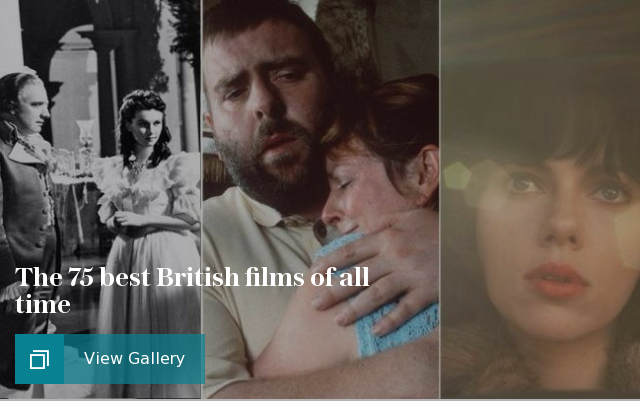Transformers: The Last Knight plus 9 other film shoots that annoyed the locals

It's a truth universally acknowledged that, whenever "local residents" crop up in a news article, they're usually being "outraged", "angered" or "upset"... especially when their village/street/favourite park bench has been taken over by a big Hollywood productions.
Occasionally, the ranks of unhappy local residents can swell to include an entire country. Last year, explosion-loving director Michael Bay has reportedly bedecked Blenheim Palace, the former home of wartime leader Winston Churchill, with swastikas, and turned it into a Nazi HQ for his new action movie Transformers: The Last Knight.
Unsurprisingly, a fair number people complained about the palace's new decor, describing it as "disrespectful ".
But to make Bay feel better – because directors of billion-pound franchises are always in need of cheering up – we've listed nine other times Hollywood filming didn't go down too well with the locals.
1. When Edward Scissorhands gave a Florida road pink and yellow homes
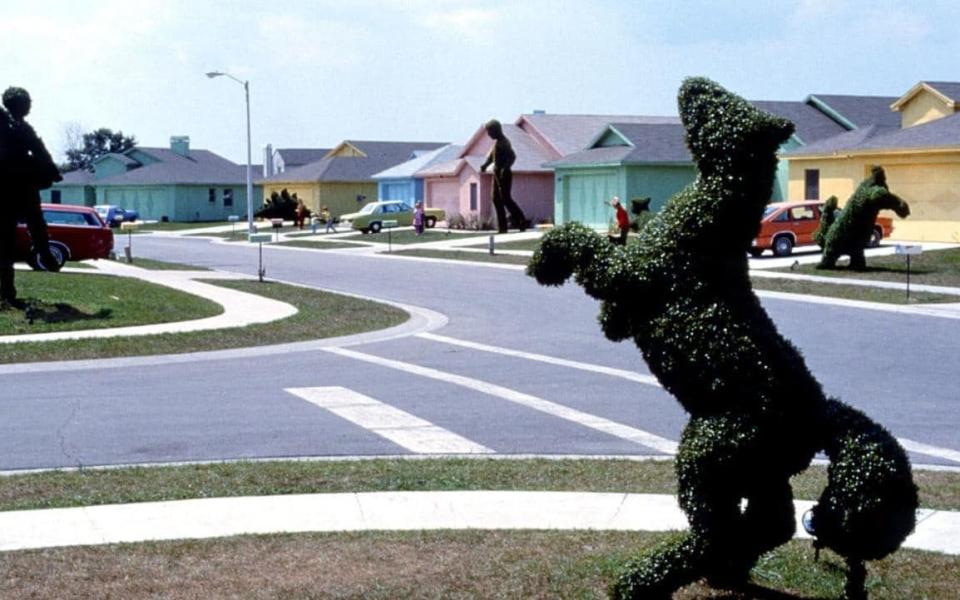
The faded pastel, ice cream-coloured houses of Tim Burton's Edward Scissorhands were an essential part of the film's dream-like suburban uniformity – and to create the distinctive aesthetic, the director decided to take over an entire neighbourhood.
Residents of the Tampa, Florida development he eventually fixed upon were relocated to a motel for the duration of filming, and had to agree to have their home repainted in one of Burton's four chosen shades.
All participants were compensated, and the film did offer a significant boost to the local economy, meaning that the majority of locals were pretty happy with the arrangement. Those left behind, however, had to see their neighbourhood undergo a drastic transformation.
It wasn't just the paint job: existing foliage and trees were uprooted (Burton wanted only shrubs and neat lawns), while any houses with unusual design features had to be remodelled to fit in with his vision of domestic blandness.
"Initially they [the locals] didn’t like it,” production designer Bo Welch admitted to Entertainment Weekly, ”but I think they got used to it. It made it more of a fun place.”
One stubborn resident reportedly held out until the very last minute, forcing filmmakers to shoot around his home, before finally deciding he might as well submit to the general makeover.
2. When Star Wars threatened the Skellig sea birds

It's easy to see why JJ Abrams opted to film Star Wars: The Force Awakens scenes on the tiny Irish island of Skellig Michael: the uninhabited, lushly green rock made the perfect retreat for beardy Jedi exile Luke.
But Abrams's choice of locale led to widespread criticism from environmentalists, who were concerned about the potential impact on the island's colonies of sea birds, which include puffins, manx shearwater and European petrel. The debate was reignited in 2015, when Episode 8 director Rian Johnson returned to Skellig, and a specially appointed conservation officer was given the power to put a stop to filming if needed.
More recently, there have also been concerns about the film's impact on local tourism. While an influx of visitors might be good for the economy, the number of people able to visit the island each day must be limited, in order to protect its wildlife, leading to a conflict between conservation and business interests.
“The marketing initiatives that are out there in relation to Star Wars and Skellig Michael are the biggest threat the island has encountered in the last century,” said local tour guide Claire O’Halloran.
3. When Remembrance Day services were interrupted by Second World War explosions

In 2013, David Ayer and the production team behind the Brad Pitt war movie Fury were heavily criticised after they chose to carry out filming in Shirburn, Oxfordshire on Remembrance Sunday.
Just to make matters worse, the scenes being filmed weren't quiet, character-building interludes: instead, residents were interrupted by loud explosions, while actors were spotted in Nazi uniforms.
"Whoever is responsible is insensitive," local council chairman Ian Hill said at the time.
"A letter has been sent to express our feelings of how inappropriate it was for Sherman tanks to be rolling across the countryside while explosions were being let off. Local people are very angry."
4.When Max Max (allegedly) tore up a Namibian desert
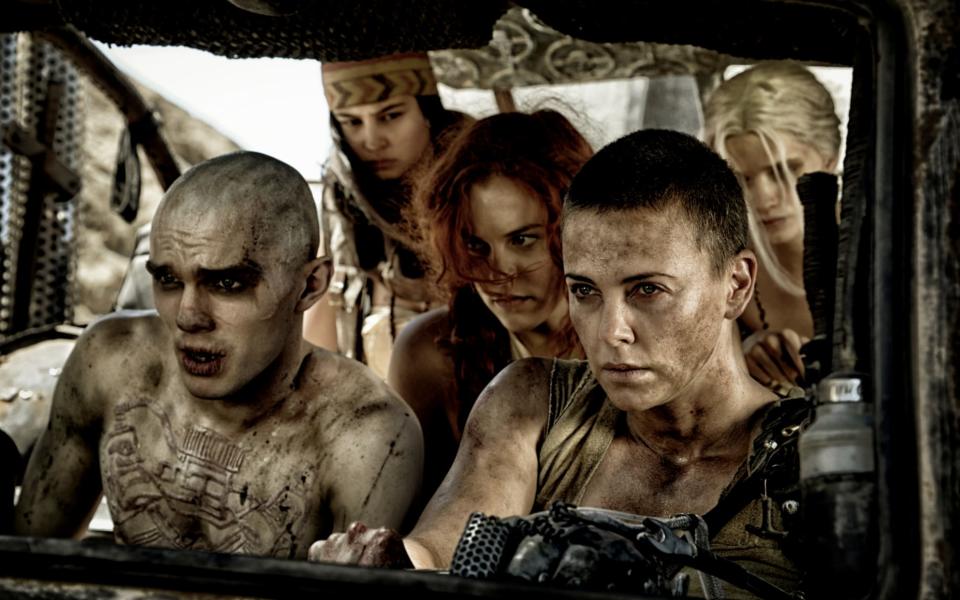
George Miller's apocalyptic, adrenaline-infused Mad Max: Fury Road left cinema-goers breathless with excitement, and even claimed an Academy Award nomination (no mean feat for an action flick). But, while Miller's epic road battles impressed audiences, environmentalists were less enthused, claiming that filming in the Namib desert had damaged the region's fragile eco-system.
In 2013, environmental scientist Jon Henschel alleged that, during the 2012 shoot, crew had driven over previously untouched areas, putting wildlife and plants at risk.
Local tour guide Tommy Collard also claimed that the filming, which took place between July and December in the region's Carob National Park, had left its mark on the area.
“What is worse is the film crew tried to remove the marks they left themselves by dragging nets over them, ripping plants out,” he told AFP. “One cannot rehabilitate the landscape of the Namib Desert.”
The Namibia Film Commission strongly denied that any damage had taken place, insisting that filmmakers had behaved responsibly.
5. When Sacha Baron Cohen humiliated the residents of a Romanian village
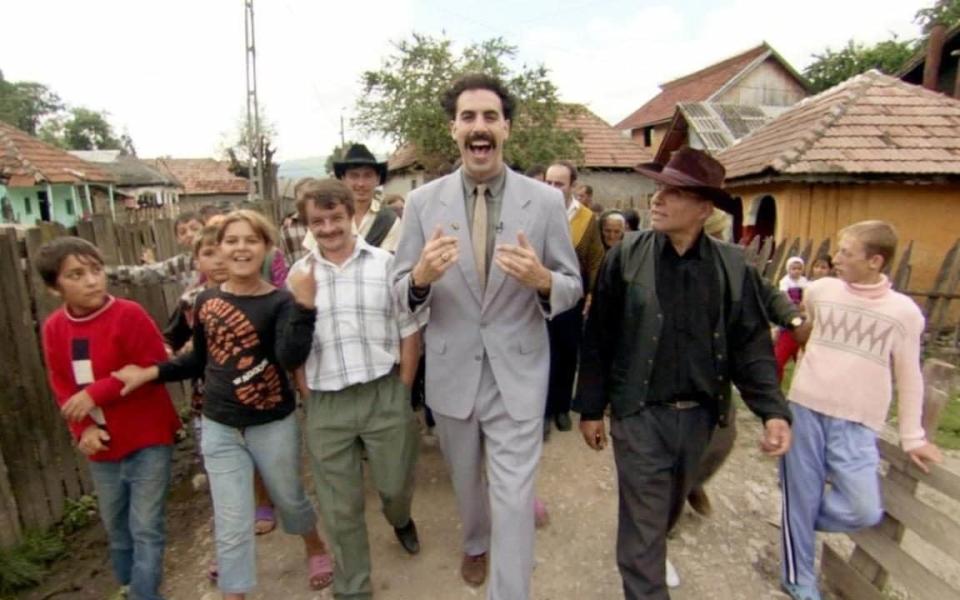
At the beginning of Sacha Baron Cohen's 2006 comedy Borat, we see the village of the rural titular character, played by the film's director. The settlement, home to Borat's "number four prostitute" sister and a "local abortionist", is located in Kazakhstan in the movie – but filming for the scenes took place in the Romanian village of Glod, where locals were reportedly paid just £3 each for their participation.
Unfortunately, according to the 2008 BBC 4 Storyville Documentary, nobody bothered to enlighten these low-paid extras as to exactly what they were getting into. Many of the villagers consequently thought they were making a documentary, rather than a spoof, and were humiliated when they saw how they were portrayed in the finished film.
'It is disgusting. They conned us into doing all these things and never told us anything about what was going on. They made us look like primitives; like uncivilised savages," said one resident. "They made millions, but only paid us about £3."
A lawsuit was attempted, but the villagers have been unable to claim any compensation from the filmmakers.
6. When Sacha Baron Cohen humilated the residents of Grismby

Almost a decade after making Borat, Baron Cohen managed to upset residents of the Lincolnshire town of Grimsby by portraying the former fishing town as a deprived wasteland, populated by the jobless, the boorish, and the morbidly obese.
Yes, his film Grimsby (about a James Bond-esque super spy forced to unite with his estranged football hooligan brother) was a comedy...but some of the town's residents failed to get the joke.
To make matters even worse, he didn't even shoot in Grimsby, but in the Essex town of Tilbury, meaning that Grimsby residents missed out on the excitement (not to mention the economic boost) of a visiting production crew.
"It is using the town's name in potentially a poor light. What also worries me is that there is no benefit to the local economy which is carrying the town's name," North East Lincolnshire Councillor Matthew Brown told the Daily Mail.
"Anything that you associate with football hooliganism is going to be negative, but I hope people will be open-minded when they watch the film."
7. When Julia Roberts stopped worshippers from getting to their temple
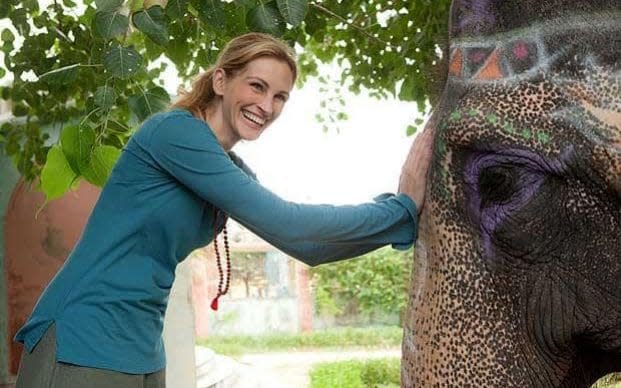
In 2009, it was claimed that India-based filming for the Julia Roberts movie Eat, Pray, Love (an adaptation of the bestselling book by Elizabeth Gilbert) had prevented villagers from being able to access an important local temple.
Hindu residents of Ashram Hari Mandir, near Delhi, were planning to visit the religious site to pay their respects to the Goddess Durga, but reportedly found themselves cut off by the film crew's security team.
"Entry for devotees is barred. We were not allowed to enter and pray in the morning by the security. Only those who could manage to sneak in did so but most of us were all sent back. It's [the Hindus fetsival] Navratras and we must not be stopped from visiting a temple," said unhappy local resident Shakuntala Devi.
8. When The Beach ruined the beach

These days, he's known for his dedication to saving the planet (and for scoffing raw bison liver on the set of The Revenant). But, back in 2000, Leonard DiCaprio found himself caught up in an environmental controversy, after his movie The Beach, a Danny Boyle-directed tale of a paradisiacal trip to a secret retreat that slowly morphs into a sort of gap year from hell, attracted criticism from campaigners.
A large part of the 1999 shoot took place on the Thai island of Ko Phi Phi Lee, where filmmakers were given permission to destroy local vegetation, clearing an area on the Maya beach, and to introduce non-native plants to the island. The crew were asked to restore any damage but local activists later claimed that they had failed to do so. It was also claimed that the filming had led to an increase in erosion later in the year.
Predictably enough, DiCaprio himself sided with the environmentalists, stating in 2000 that he was "personally committed to resolving the controversy over The Beach in a manner that serves to protect the environment of Maya Bay and Thailand".
A lawsuit was eventually brought and upheld against the Thai government officials who allowed the filming and production company 20th Century Fox, who were ordered to pay damages.
9. When Brad Pitt and Robert Pattinson terrified some Northern Irish farm animals
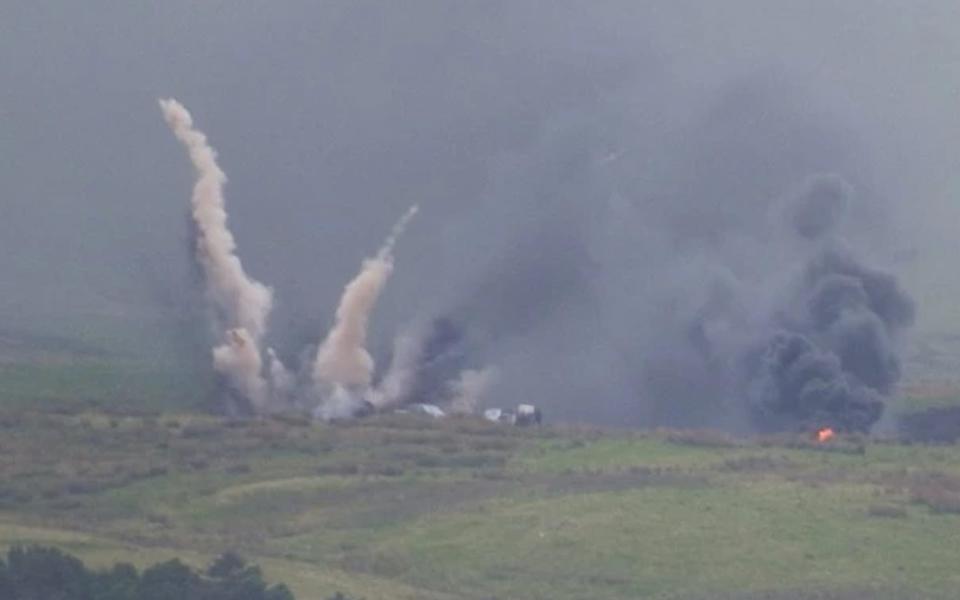
James Gray's forthcoming The Lost City of Z, an action-adventure starring Charlie Hunnam, Robert Pattinson and Sienna Miller, isn't released until the Spring of 2017.
But filming for the Brad Pitt-produced movie has already managed to upset locals in Ballygally near County Antrim, it was claimed last year.
According to Ballygally resident Jason McKillion, those living near to the filming weren't warned in advance about the noisy shoot...leading to some severely alarmed local livestock.
“It started last Monday [(September 14 2015] with bangs, gunfire and small explosions. Then on Tuesday the bigger explosions started,” he said in an interview with the Larne Times (via Belfast Live).
“The explosions shook the house and windows and the boom echoed through the glen.
“My neighbour’s horses were in the field near the film set and they went spare, trying to jump the ditches.
“On Wednesday, there was another explosion and my animals went daft. The chickens were squawking and the dog was outside, barking and shaking."
“I was sitting outside and the chickens had just come back when there was another explosion, even louder than the last. Another neighbour’s cow and calf jumped the hedge and the cows were bellowing in fear."
